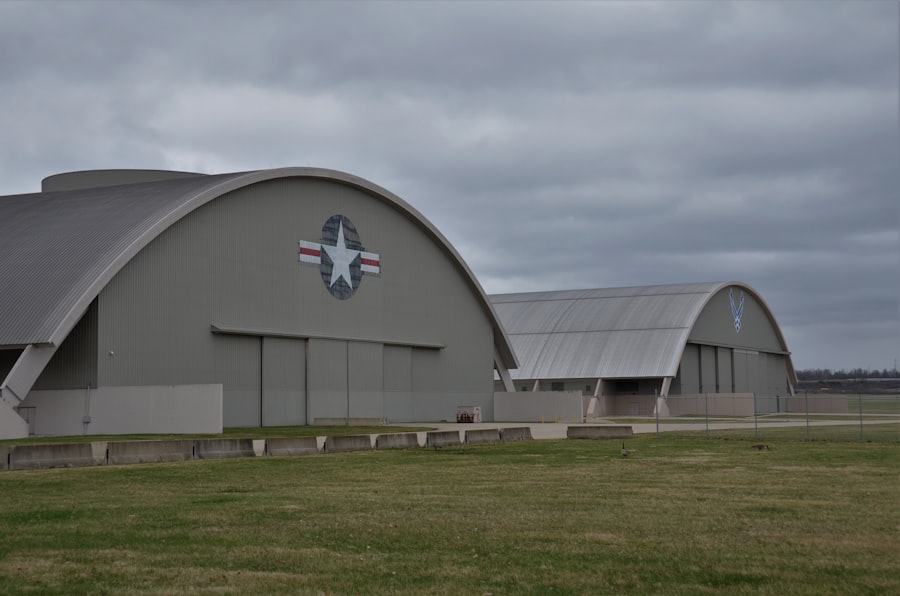The Aviation Research Centre (ARC) stands as a pivotal institution within the aviation sector, dedicated to advancing the frontiers of aeronautical research and development. Established with the vision of enhancing the safety, efficiency, and sustainability of aviation, the ARC serves as a hub for innovation, bringing together experts from various fields to tackle the complex challenges faced by the industry. Its multifaceted approach encompasses everything from fundamental research to applied technologies, ensuring that the aviation sector remains at the cutting edge of global advancements.
At its core, the ARC is committed to fostering a culture of collaboration and knowledge sharing. By engaging with stakeholders across the aviation ecosystem—including government agencies, private sector companies, and academic institutions—the centre aims to create a synergistic environment where ideas can flourish. This collaborative spirit is essential in an industry that is constantly evolving, driven by technological advancements and changing regulatory landscapes.
The ARC not only contributes to the development of new technologies but also plays a crucial role in shaping policies that govern aviation safety and operations.
Key Takeaways
- The Aviation Research Centre plays a crucial role in advancing aviation technology and safety.
- The history and evolution of the Aviation Research Centre showcases its commitment to innovation and excellence.
- The Centre’s collaborations with industry and academic institutions drive cutting-edge technologies and innovations.
- The impact of the Aviation Research Centre on aviation safety and efficiency is significant and far-reaching.
- The future directions and expansion plans of the Aviation Research Centre promise continued advancements in the aviation industry.
History and Evolution of the Aviation Research Centre
The origins of the Aviation Research Centre can be traced back to a period when the aviation industry was undergoing significant transformations. Established in the late 20th century, the ARC was born out of a necessity to address the growing complexities associated with air travel and aircraft design. Initially focused on basic research, the centre quickly expanded its scope to include applied research and development, responding to the needs of an industry that was rapidly evolving due to technological advancements and increased demand for air travel.
Over the years, the ARC has undergone several phases of evolution, adapting to the changing landscape of aviation. In its early years, the centre primarily concentrated on aerodynamics and propulsion systems, laying the groundwork for future innovations. As global air traffic surged, the ARC recognized the need to diversify its research portfolio.
This led to a greater emphasis on areas such as air traffic management, environmental sustainability, and human factors in aviation. The centre’s ability to pivot and expand its focus has been instrumental in maintaining its relevance in an industry characterized by rapid change.
Role and Importance of the Aviation Research Centre in Aviation Industry

The Aviation Research Centre plays a critical role in shaping the future of the aviation industry by serving as a catalyst for innovation and development. One of its primary functions is to conduct research that addresses key challenges faced by the industry, such as improving fuel efficiency, reducing emissions, and enhancing safety protocols. By focusing on these areas, the ARC not only contributes to technological advancements but also supports regulatory compliance and industry standards.
Moreover, the ARC acts as a bridge between academia and industry, facilitating knowledge transfer and collaboration. This connection is vital for fostering innovation, as it allows researchers to apply theoretical concepts in practical settings. The centre’s partnerships with universities and research institutions enable it to tap into a wealth of expertise and resources, driving forward initiatives that might otherwise be constrained by funding or technical limitations.
This collaborative approach ensures that research outcomes are not only innovative but also applicable in real-world scenarios.
Cutting-Edge Technologies and Innovations at the Aviation Research Centre
| Technology | Innovation | Impact |
|---|---|---|
| Unmanned Aerial Vehicles (UAVs) | Advanced autonomous capabilities | Improved surveillance and reconnaissance |
| Supersonic Aircraft | Reduced sonic boom | Faster and more efficient air travel |
| Electric Propulsion Systems | Environmentally friendly | Reduced carbon emissions |
| Advanced Materials | Lightweight and durable | Improved fuel efficiency |
At the forefront of technological advancement, the Aviation Research Centre is home to a plethora of cutting-edge innovations that are reshaping the aviation landscape. One notable area of focus is the development of advanced materials for aircraft construction. The ARC has been instrumental in researching lightweight composite materials that enhance fuel efficiency while maintaining structural integrity.
These materials not only reduce overall aircraft weight but also contribute to lower operational costs and reduced environmental impact. In addition to materials science, the ARC is heavily invested in exploring automation and artificial intelligence (AI) within aviation operations. The integration of AI into air traffic management systems has shown promise in optimizing flight paths, reducing delays, and improving overall efficiency.
By leveraging machine learning algorithms, researchers at the ARC are developing systems that can predict traffic patterns and dynamically adjust flight schedules accordingly. This innovation not only enhances operational efficiency but also contributes to improved passenger experiences by minimizing delays.
Collaborations and Partnerships with Industry and Academic Institutions
The success of the Aviation Research Centre is largely attributed to its strategic collaborations with various stakeholders in both industry and academia. By forming partnerships with leading aerospace companies, government agencies, and universities, the ARC has created a robust network that fosters innovation and knowledge exchange. These collaborations enable researchers to access cutting-edge technologies and resources while providing industry partners with insights derived from rigorous research.
One prominent example of such collaboration is the partnership between the ARC and several universities renowned for their aerospace engineering programs. Through joint research initiatives, students and faculty members have the opportunity to work alongside experienced researchers at the centre, gaining invaluable hands-on experience in real-world projects. This symbiotic relationship not only enhances educational outcomes but also ensures that research conducted at the ARC is informed by current academic theories and practices.
Impact of the Aviation Research Centre on Aviation Safety and Efficiency

The contributions of the Aviation Research Centre extend far beyond technological advancements; they significantly impact aviation safety and operational efficiency. By conducting extensive research on safety protocols and risk management strategies, the ARC has played a vital role in enhancing safety standards across the industry. For instance, studies on human factors in aviation have led to improved training programs for pilots and air traffic controllers, reducing human error—a leading cause of aviation incidents.
Furthermore, the ARC’s focus on operational efficiency has yielded substantial benefits for airlines and airports alike. Through research on fuel-efficient flight operations and optimized maintenance schedules, airlines have been able to reduce costs while maintaining high safety standards. The implementation of these findings has resulted in more sustainable practices within the industry, aligning with global efforts to reduce carbon emissions from air travel.
Future Directions and Expansion Plans of the Aviation Research Centre
Looking ahead, the Aviation Research Centre is poised for significant growth and expansion as it continues to adapt to emerging trends in aviation technology and policy. One area of focus is sustainable aviation practices, particularly in response to increasing regulatory pressures regarding environmental impact. The ARC is actively exploring alternative fuels and electric propulsion systems as part of its commitment to reducing carbon emissions associated with air travel.
In addition to sustainability initiatives, the centre plans to expand its research capabilities by investing in state-of-the-art facilities and equipment. This includes upgrading simulation technologies that allow for more accurate modeling of aircraft performance under various conditions. By enhancing its research infrastructure, the ARC aims to attract top talent from around the world while providing researchers with the tools necessary to push boundaries in aviation innovation.
The Promising Future of Aviation Research Centre
The Aviation Research Centre stands at a crossroads where tradition meets innovation, poised to lead the aviation industry into a new era characterized by technological advancements and sustainable practices. With its rich history of research excellence and commitment to collaboration, the ARC is well-equipped to address both current challenges and future opportunities within aviation. As it continues to evolve and expand its focus areas—particularly in sustainability and automation—the centre will undoubtedly play a crucial role in shaping a safer, more efficient aviation landscape for generations to come.


